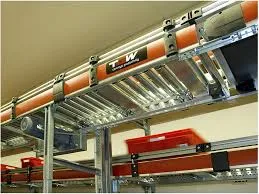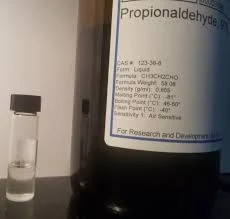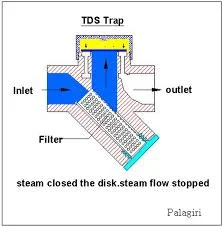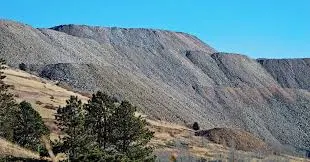Definition: Activated carbon adsorption is a process where impurities (like organic compounds, odors, and colors) are removed from a fluid (liquid or gas) by passing it through a bed of activated carbon.
Click the Translate button(see right) on this post to set your Own Language to understand more perfectly!!
Activated Carbon Adsorption Calculator
Definition Continue: Activated Carbon Adsorption
Activated carbon adsorption is a process where impurities (like organic compounds, odors, and colors) are removed from a fluid (liquid or gas) by passing it through a bed of activated carbon.
Key Factors:
Applied Flow Rate (L/min): The volume of fluid passing through the activated carbon bed per minute.
Influent Concentration (mg/L): The concentration of the target pollutant in the fluid entering the adsorption system.
Effluent Concentration (mg/L): The concentration of the target pollutant in the fluid leaving the adsorption system.
Adsorption Capacity (mg/g): The maximum amount of pollutant that can be adsorbed by one gram of activated carbon.
Contact Time (min): The time the fluid spends in contact with the activated carbon bed.
Sample Values:
Applied Flow Rate: 100 L/min
Influent Concentration: 50 mg/L
Effluent Concentration: 5 mg/L
Adsorption Capacity: 200 mg/g
Contact Time: 5 minutes
Calculation Example:
Calculating Adsorption Efficiency:
Adsorption Efficiency = [(Influent Concentration - Effluent Concentration) / Influent Concentration] * 100
Adsorption Efficiency = [(50 mg/L - 5 mg/L) / 50 mg/L] * 100 = 90%
Estimating Required Activated Carbon:
Assuming complete bed utilization (which is often not the case in real-world applications):
Mass of pollutant removed per minute = Flow rate * (Influent Concentration - Effluent Concentration)
Mass of pollutant removed per minute = 100 L/min * (50 mg/L - 5 mg/L) = 4500 mg/min
Activated carbon required per minute = Mass of pollutant removed per minute / Adsorption Capacity
Activated carbon required per minute = 4500 mg/min / 200 mg/g = 22.5 g/min
Note: This is a simplified calculation. Actual design considers factors like breakthrough curves, bed life, and regeneration cycles.
Additional Considerations:
Activated Carbon Type: Different types of activated carbon have varying adsorption capacities for different pollutants.
Temperature and Pressure: These factors affect adsorption efficiency.
Bed Depth: The thickness of the activated carbon bed influences contact time and adsorption capacity.
Regeneration: Activated carbon becomes saturated and needs regeneration (heating or chemical treatment) to restore its adsorption capacity.
Potential Applications:
Water Treatment: Removing contaminants like organic matter, chlorine, and taste/odor compounds.
Air Pollution Control: Controlling emissions from industrial processes and vehicles.
Gold Recovery: Recovering gold from cyanide solutions.
Pharmaceutical Industry: Purifying drug intermediates and final products.
By understanding these factors and conducting proper design calculations, you can optimize activated carbon adsorption systems for specific applications.
Let's Delve Deeper into Activated Carbon Adsorption
Focusing on a Specific Application: Wastewater Treatment
Activated carbon adsorption is widely used in wastewater treatment to remove organic contaminants, color, taste, and odor. Let's explore this application in more detail
.
Key Factors in Wastewater Treatment:
Influent Characteristics: The nature of wastewater (domestic, industrial, or a combination) significantly impacts the type of activated carbon required and the adsorption process.
Contaminant Removal: Specific pollutants like volatile organic compounds (VOCs), pesticides, pharmaceuticals, and endocrine-disrupting compounds (EDCs) have different adsorption capacities and require tailored carbon types.
Regeneration: Effective regeneration methods are crucial for extending the life of activated carbon and maintaining adsorption capacity.
Calculation Example:
Let's consider a wastewater treatment plant with the following parameters:
Influent flow rate: 1000 m³/h
Influent concentration of a specific organic pollutant: 20 mg/L
Desired effluent concentration: 0.5 mg/L
Adsorption capacity of the selected activated carbon: 300 mg/g
Calculations:
Mass of pollutant removed per hour: 1000 m³/h * (20 mg/L - 0.5 mg/L) * (1 kg/1000000 mg) = 19.5 kg/h
Activated carbon required per hour: 19.5 kg/h / 300 mg/g * (1000 g/kg) = 65 kg/h
Note: This is a simplified calculation. Actual design considers factors like bed depth, empty bed contact time, and carbon replacement frequency.
Additional Considerations:
Adsorption Isotherms: These models describe the relationship between the concentration of the pollutant in the liquid phase and the amount adsorbed onto the activated carbon.
Breakthrough Curves: These curves show the change in effluent concentration over time as the activated carbon bed becomes saturated.
Cost Analysis: The cost of activated carbon, regeneration, and disposal must be considered in the overall system design.
Let's Explore Activated Carbon in Air Pollution Control
Activated carbon is widely used in air pollution control to remove various gaseous and particulate pollutants.
Key Factors in Air Pollution Control:
Gas Composition: The type of pollutants present in the gas stream (VOCs, odors, toxic gases) determines the type of activated carbon required.
Gas Flow Rate: The volume of gas passing through the carbon bed per unit time affects the size of the carbon bed and regeneration frequency.
Particle Size Distribution: For particulate matter removal, the efficiency of the carbon bed depends on the size of the particles.
Temperature and Pressure: These factors influence the adsorption capacity of the carbon.
Regeneration: Effective regeneration is crucial for maintaining the carbon's adsorption capacity.
Calculation Example:
Let's consider a gas stream containing VOCs with the following parameters:
Gas flow rate: 1000 m³/h
Influent VOC concentration: 50 ppm
Desired effluent VOC concentration: 5 ppm
Adsorption capacity of the selected activated carbon: 300 g VOC/kg carbon
Calculations:
Mass of VOCs removed per hour: 1000 m³/h * (50 ppm - 5 ppm) * (1 kg/1000000 ppm) = 4.5 kg/h
Activated carbon required per hour: 4.5 kg VOC/h / 300 g VOC/kg carbon * (1000 g/kg) = 15 kg/h
Note: This is a simplified calculation. Actual design considers factors like bed depth, empty bed contact time, and carbon replacement frequency.
Additional Considerations:
Adsorption Isotherms: These models help predict the adsorption capacity of the carbon under different conditions.
Breakthrough Curves: Monitoring the effluent concentration over time helps determine the carbon bed life.
Regeneration Methods: Thermal or steam regeneration are common methods for reactivating carbon.
Carbon Loss: During regeneration, some carbon is lost, which needs to be accounted for in the design.
Activated Carbon in Gold Recovery
Activated carbon is a crucial component in the gold recovery process, particularly from cyanide solutions.
Key Factors in Gold Recovery:
Gold Concentration: The amount of gold present in the solution determines the required amount of activated carbon.
Cyanide Concentration: The concentration of cyanide affects the adsorption of gold onto the carbon.
Carbon Type: Specific activated carbons with high adsorption capacity for gold are used in this process.
Contact Time: The time required for gold to adsorb onto the carbon.
Desorption: The process of recovering gold from the saturated carbon involves using strong solvents or heat.
Calculation Example:
While specific calculations for gold recovery can be complex, we can outline the general approach.
Determine gold loading on the carbon: This involves laboratory tests to establish the maximum amount of gold that can be adsorbed per gram of carbon under specific conditions.
Calculate carbon requirement: Based on the gold concentration in the solution and the desired recovery efficiency, the amount of carbon needed can be estimated.
Design the adsorption column: The dimensions of the column, flow rate, and contact time are determined based on the calculated carbon requirement and process parameters.
Additional Considerations:
Carbon Regeneration: After the carbon becomes saturated with gold, it needs to be regenerated to recover the gold and reuse the carbon.
Gold Recovery Process: The recovered gold is further processed to obtain pure gold.
Environmental Impact: The use of cyanide in gold recovery requires careful management and disposal.
How is it possible to Earn Money using the knowledge of Activated Carbon Adsorption Calculation in our practical life?????
Monetizing Activated Carbon Adsorption Knowledge
Understanding activated carbon adsorption is crucial in various industries. Here's how this knowledge can be monetized:
Consulting Services
Environmental Consultant: Offer expertise in designing and optimizing activated carbon systems for wastewater treatment, air pollution control, and other applications.
Process Optimization: Help industries improve the efficiency of their activated carbon systems by analyzing performance data, identifying bottlenecks, and recommending improvements.
Product Development and Sales
Activated Carbon Manufacturer: Develop new types of activated carbon with enhanced adsorption properties for specific applications.
Adsorption Equipment Manufacturer: Design and manufacture activated carbon-based systems for various industries.
Regeneration Technology Developer: Create innovative methods for regenerating activated carbon to extend its lifespan and reduce costs.
Research and Development
Research Scientist: Conduct research to improve the understanding of adsorption mechanisms and develop new adsorption materials.
Patent Development: Develop and patent new adsorption technologies or processes.
Education and Training
Training and Workshops: Offer training programs on activated carbon adsorption for engineers, operators, and technicians.
Online Courses: Develop online courses on activated carbon adsorption principles and applications.
Other Avenues
Expert Witness: Provide expert testimony in legal cases involving activated carbon technology.
Technical Writing: Write articles, papers, or books on activated carbon adsorption for technical publications.
Key to success:
Deep understanding of adsorption principles and practical applications.
Strong problem-solving and analytical skills.
Ability to communicate complex technical information to a diverse audience.
Networking with industry professionals and staying updated on the latest advancements.
By leveraging your knowledge of activated carbon adsorption, you can create value for industries and generate income through various avenues.
Do YOU Want To Earn Money In Various Ways, Click The Link & Explore Your Field of Interest!!!






































